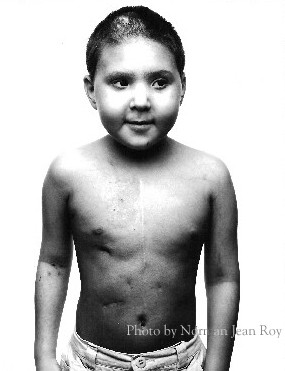
This study was just published by University of Minnesota. I think what it means is they are having success with transplants that don't pretreat the patients with radiation. Remember how you had to go into that room where no-one else could go and sit so still. Most kids your age needed to be sedated. You listened to music. You were the youngest kid ever to have TBI there without anesthesia.
The radiation really messes you up. Especially if you have FA 'cause your cells are so fragile to start with. This is good news for other kids needing transplant. I wish they had learned it earlier.
Fludarabine-based regimen without irradiation is effective in patients with Fanconi anemia who are undergoing HLA-matched related donor hematopoietic cell transplantation.
According to a recently published report from the United States, "To potentially reduce late effects of malignancy, chronic graft-versus-host disease (GVHD), endocrinopathy, and infertility in patients with Fanconi anemia (FA) undergoing HLA-matched related donor hematopoietic cell transplantation (HCT), we developed a regimen using fludarabine (FLU), cyclophosphamide (CY), and antithymocyte globulin (ATG) followed by infusion of T-cell depleted (TCD) bone marrow (BM) or unmanipulated umbilical cord blood (UCB).
"GVHD prophylaxis consisted of cyclosporine and short Course methylprednisolone. Between April 2000 and June 2003, 11 patients (10 aplastic anemia (AA), 1 myelodysplastic syndrome (MDS)) underwent HCT using this regimen. Stem cell sources were BM and UCB in eight and three patients, respectively."
"All patients demonstrated primary engraftment. Median clays to neutrophil and platelet engraftment were 11 days (range 9-21) and 38 days (range 19-381), respectively.
"No patient developed GVHD after primary HCT. The patient with MDS relapsed with AML and a maternal donor recipient experienced secondary graft failure," reported P.L. Tan and colleagues at the University of Minnesota.
The authors continued, "For the nine FA patients with AA who underwent HLA-identical sibling donor HCT, the Kaplan-Meier estimates of overall survival and event-free survival (EFS) at 2 years are 100 and 82%, respectively, at a median follow-up of 2.9 years (range 1.9-4.8)."
"A FLU-based, nonirradiation approach is effective for FA patients with AA Undergoing HLA-identical sibling donor HCT," Tan concluded.
Tan and colleagues published their study in Pediatric Blood & Cancer (Successful engraftment without radiation after fludarabine-based regimen in Fanconi anemia patients undergoing genotypically identical donor hematopoietic cell transplantation. Pediatr Blood Cancer, 2006;46(5):630-636).
For additional information, contact P.L. Tan, University of Minnesota, Dept. Pediatrics, Blood & Marrow Transplant Program, MMC 484, 420 Delaware St. SE, Minneapolis, MN 55455, USA.


No comments:
Post a Comment